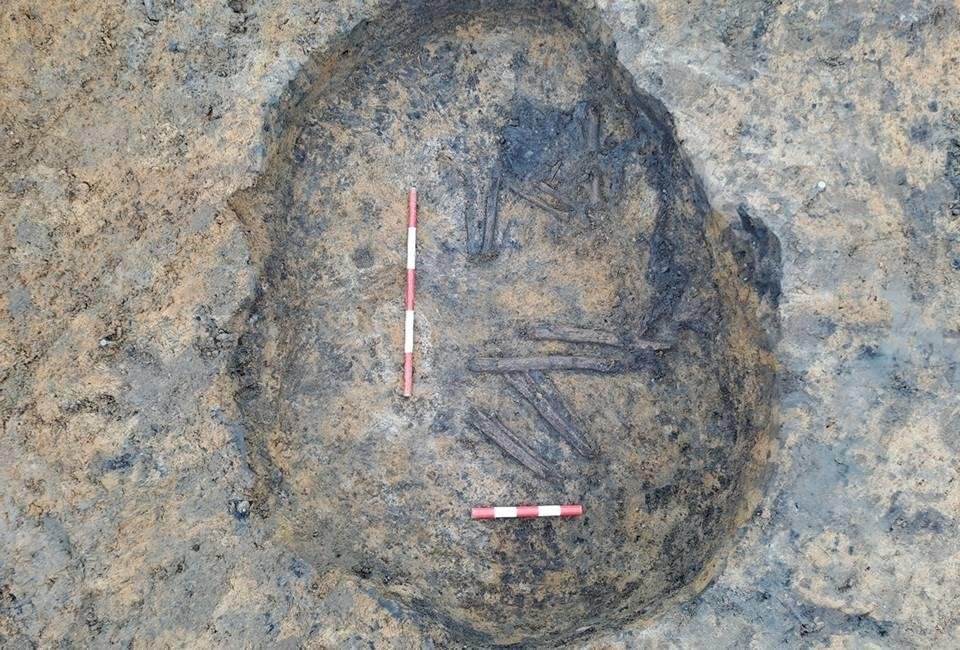Archaeologists, while excavating the site for a new sewer system to serve the construction of a prison near Full Sutton in East Yorkshire, England, have unearthed a burial monument containing human remains estimated to be approximately 4,500 years old.
 Credit: Yorkshire Water
Credit: Yorkshire Water
The individual was buried in a fetal or crouched position, a burial tradition observed in similar monuments known as “round barrows” found throughout the UK.
Gavin Robinson, representing Ecus Archaeology, the team leading the investigation, highlighted the unexpected preservation of the human remains despite the typically acidic sandy soil conditions. He explained that the grave had been filled with a mixture of burnt stone and charcoal from a nearby “burnt mound” spread, which likely contributed to the bones’ survival.
The grave, devoid of any artifacts, was located near the burnt mound, believed to be from the Late Neolithic or Bronze Age. This mound, which includes a small earth oven and what appears to be a well, has provided a wealth of information about ancient practices. Soil samples from the well are anticipated to yield valuable insights into the site’s historical usage, potentially including preserved remains of ancient plants and insects.
Moreover, the archaeological investigations also unveiled parts of an ancient Roman road, suggesting it led northwards towards the settlement of ‘Derventio Brigantium’, modern-day Malton.
The project, undertaken by Ecus Archaeology for Yorkshire Water as part of a £5 million initiative to construct a 5.2-kilometer sewer system, has garnered significant interest from researchers and the public alike. Adam Ellis, project manager at Yorkshire Water, expressed enthusiasm for the project’s findings, emphasizing the importance of archaeological investigations in areas of historical significance.
The presence of the burial monument burnt mound, and Roman road underscores the significance of Full Sutton and its surroundings in the broader context of British history.
As the analysis stage of the project begins, researchers anticipate that the recorded remains and environmental materials recovered will provide valuable information about life some four and a half thousand years ago.





